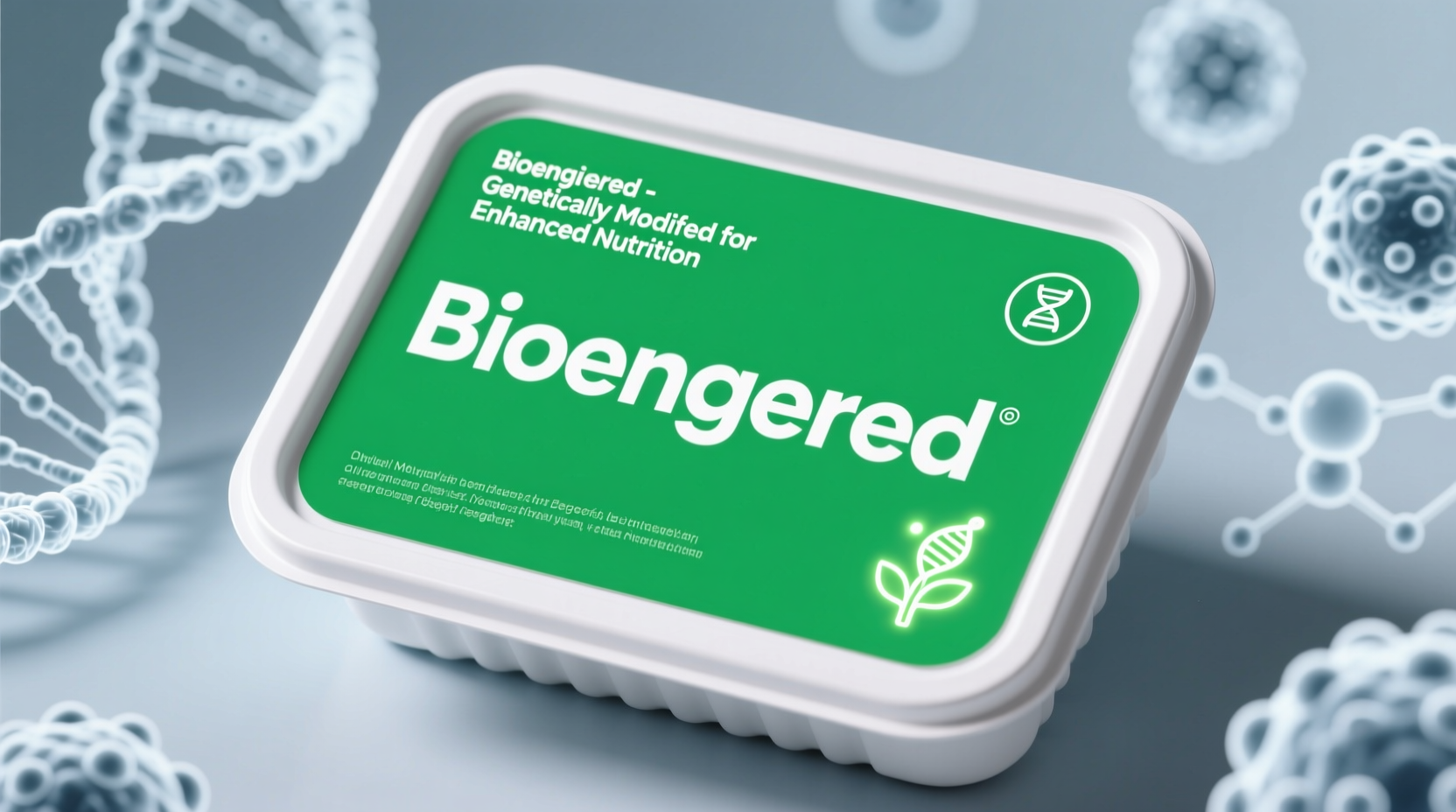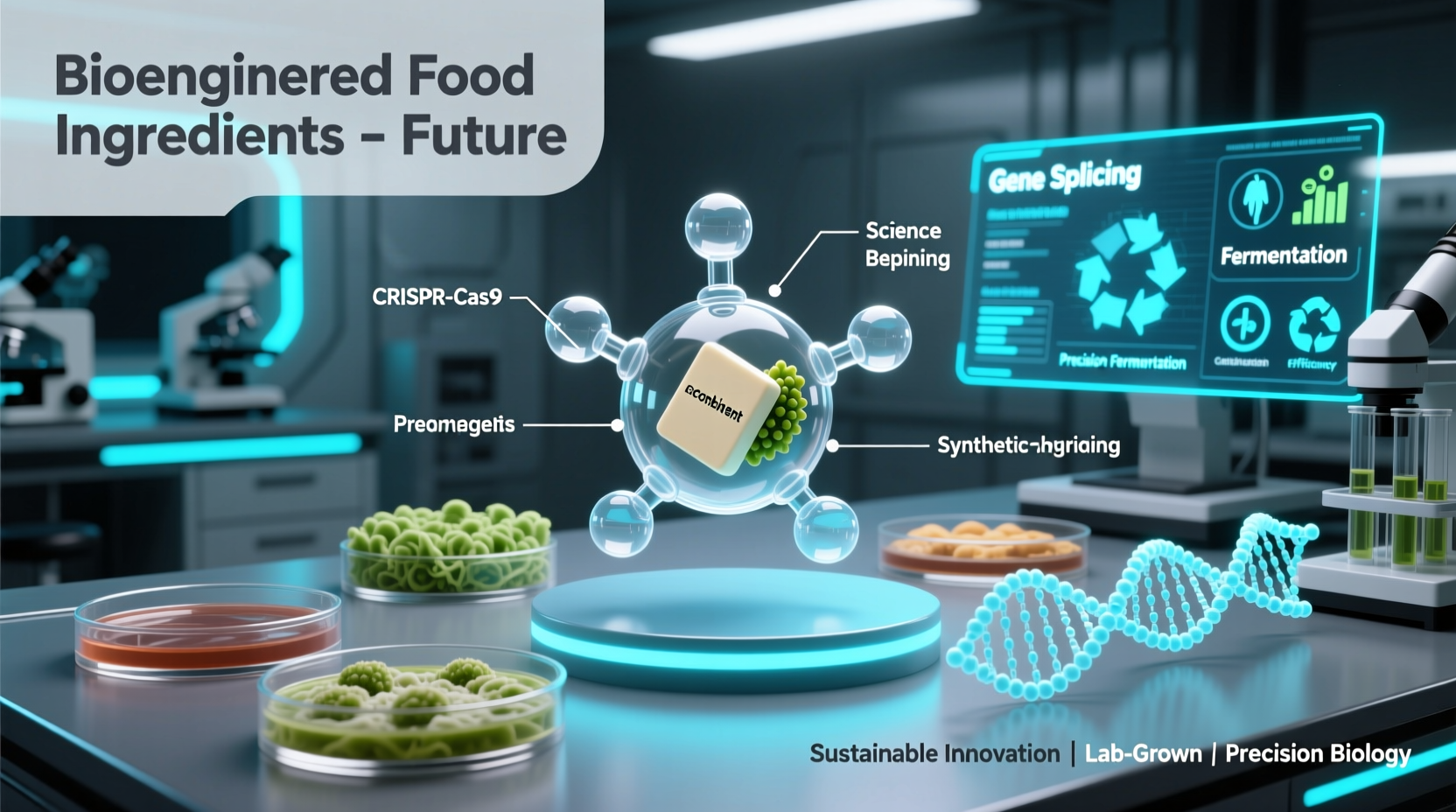Ever found yourself staring at grocery store shelves wondering which products contain bioengineered ingredients? You're not alone. With new labeling requirements taking full effect, understanding what bioengineered food ingredients are—and how they impact your shopping decisions—has become essential knowledge for today's informed consumer. This guide cuts through the confusion with science-backed facts, practical identification tips, and clear explanations of what these labels actually mean for your kitchen.
Understanding Bioengineered Food Ingredients: The Core Definition
When we talk about bioengineered food ingredients, we're referring to foods modified using precise molecular techniques that introduce specific genetic changes. Unlike traditional genetic modification which might involve crossbreeding entire plants, bioengineering targets individual genes to create desired traits. The USDA's official definition specifies that bioengineered foods contain "detectable modified genetic material that was created using recombinant deoxyribonucleic acid (rDNA) techniques and for which the modification could not otherwise be obtained through conventional breeding or found in nature."
Think of it this way: while all bioengineered foods are genetically modified, not all genetically modified foods qualify as bioengineered under current labeling laws. The key distinction lies in whether the genetic change could occur naturally or through traditional breeding methods.
| Category | Definition | Labeling Required |
|---|---|---|
| Bioengineered (BE) | Contains detectable modified genetic material from rDNA techniques that couldn't occur naturally | Yes, under USDA standard |
| Traditional GMO | Modified through genetic techniques but changes could occur naturally | No specific BE labeling |
| Conventional | No genetic modification beyond traditional breeding | No |
The Evolution of Bioengineered Food Regulation
Understanding the regulatory timeline helps clarify why bioengineered labeling matters today. The journey began long before the current standards:
- 1992: FDA establishes policy for genetically modified foods, treating them substantially equivalent to conventional foods
- 2016: National Bioengineered Food Disclosure Law signed by President Obama
- 2018: USDA develops National Bioengineered Food Disclosure Standard
- January 1, 2022: Mandatory compliance date for most food manufacturers
- 2025: Full implementation with standardized labeling across all products
This progression reflects growing consumer demand for transparency. According to USDA data, over 70% of Americans supported mandatory labeling of genetically modified foods in pre-regulation surveys, driving the development of our current disclosure system.
Common Bioengineered Ingredients You'll Encounter
While the list continues evolving, these ingredients most frequently appear in bioengineered form:
- Soybeans - Primarily used for soybean oil and protein
- Corn - Especially field corn used for sweeteners and oil
- Sugar beets - Source of approximately 55% of US sugar
- Canola - Common source of vegetable oil
- Papaya - Specifically the Rainbow variety resistant to ringspot virus
- Summer squash - Certain virus-resistant varieties
These ingredients typically appear in processed foods as oils, sweeteners, starches, or protein additives. You won't find fresh produce like apples or potatoes labeled as bioengineered unless they've undergone specific genetic modifications that meet the USDA's definition.

Decoding Bioengineered Food Labels
Since the USDA's National Bioengineered Food Disclosure Standard took full effect, you'll encounter several labeling formats:
- Text disclosure: "Contains a bioengineered food ingredient"
- BE symbol: The standardized USDA bioengineered symbol
- Electronic/digital link: QR codes or "Scan here" instructions
- Text message disclosure: "Text [keyword] to [number] for more information"
It's important to understand the limitations of these labels. The standard does not apply to foods where the modified genetic material is undetectable—like highly refined oils from bioengineered crops. Similarly, small food manufacturers with annual receipts under $2.5 million and restaurants aren't required to disclose bioengineered ingredients.
Addressing Common Misconceptions
Let's clear up some widespread misunderstandings about bioengineered foods:
- Misconception: Bioengineered foods are less nutritious
Reality: Nutritional content remains comparable to conventional counterparts unless specifically altered for nutritional enhancement - Misconception: All bioengineered foods contain foreign DNA
Reality: Some modifications involve editing existing plant genes without introducing foreign material - Misconception: Bioengineered labeling indicates safety concerns
Reality: The USDA and FDA maintain that approved bioengineered foods are as safe as conventional foods—the labeling serves transparency, not safety warnings
Practical Shopping Guidance
Armed with this knowledge, here's how to navigate bioengineered food choices:
- Check processed food labels for the BE symbol or disclosure statement
- Understand that organic certification automatically means non-bioengineered (though not necessarily non-GMO)
- Ask questions at grocery stores about their policies regarding bioengineered ingredients
- Scan QR codes when available for detailed information about specific ingredients
- Focus on whole foods when avoiding bioengineered ingredients—fresh produce typically carries clear labeling if modified
Remember that bioengineered labeling represents a transparency measure rather than a safety indicator. The FDA and USDA continue to affirm that bioengineered foods meeting regulatory standards are safe for consumption.











 浙公网安备
33010002000092号
浙公网安备
33010002000092号 浙B2-20120091-4
浙B2-20120091-4